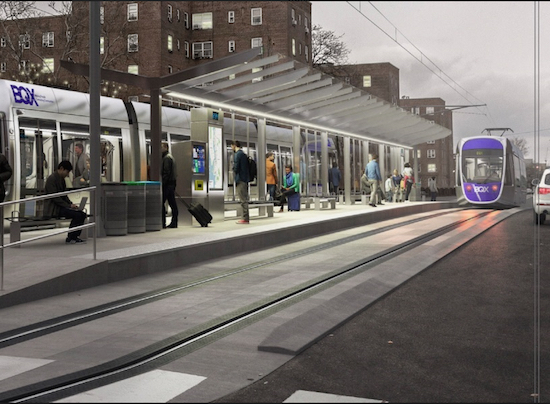De Blasio greenlights $2.7 billion BQX proposal that removes Sunset Park from route

The city is moving forward with a proposal to connect waterfront neighborhoods in Brooklyn and Queens with a streetcar.
Mayor Bill de Blasio announced on Thursday that the administration will proceed with revised plans for the Brooklyn Queens Connector (BQX), the nearly $2.8 billion streetcar project that would stretch along the waterfront for 11 miles, connecting to nine ferry landings, 13 subway routes and 30-plus bus lines.
However, there is a major change in the plan. The press release no longer includes Sunset Park as a stop along the projected route. The revised route will connect Astoria, Long Island City, Greenpoint, Williamsburg, the Brooklyn Navy Yard, Downtown Brooklyn and Red Hook.

Brooklyn Boro
View MoreNew York City’s most populous borough, Brooklyn, is home to nearly 2.6 million residents. If Brooklyn were an independent city it would be the fourth largest city in the United States. While Brooklyn has become the epitome of ‘cool and hip’ in recent years, for those that were born here, raised families here and improved communities over the years, Brooklyn has never been ‘uncool’.